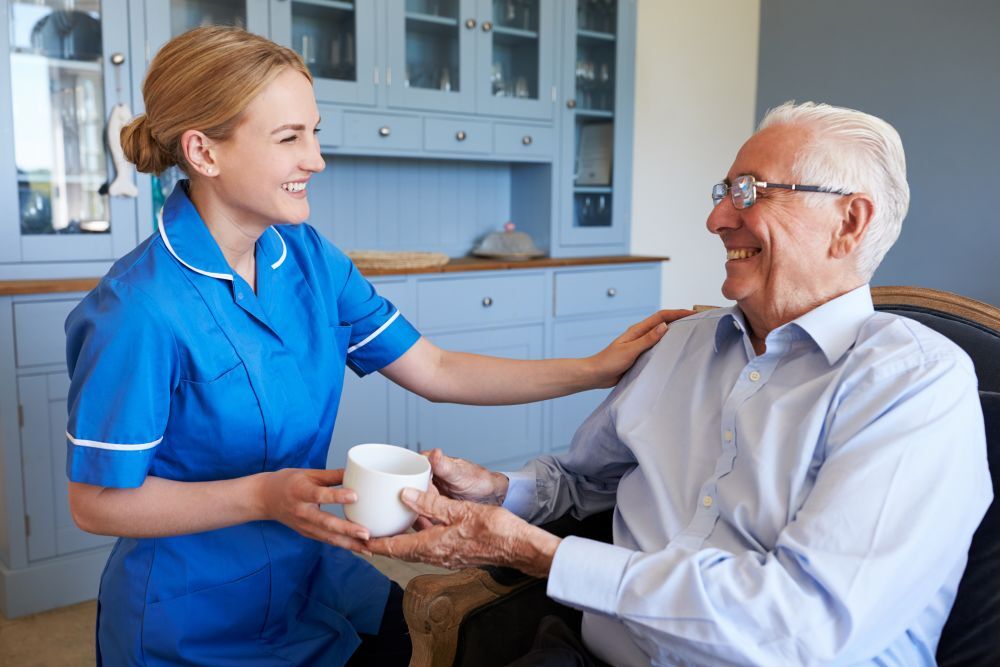Everything you need to consider ahead of your next inspection to ensure CQC compliance for medicines

The key components of medicines compliance
In order to achieve a good or outstanding CQC compliance rating, care settings need to understand the various aspects of medicines compliance, which can be best understood when broken down first into the two most crucial aspects and then into their component parts. This way, care settings can ensure that every aspect of medicines compliance is considered and addressed.
The two main areas of medicines compliance can be broken down into:
Medicines management
Medicines management involves ensuring best practices around the operations of medicines. It involves ensuring medicines are ordered, received, stored, administered and disposed of correctly and safely so that the individual receiving care gets their medicines exactly as prescribed. This can be done by following the ‘Five Rights’ of medicine administration – the right person, the right drug, the right time, the right dose and the right route.
Medicines optimisation
Using medicines appropriately involves a constant process of reviewing and actioning – with residents living in care homes, their medicine needs can change weekly or even daily, and the process of ensuring outstanding medicines optimisation should reflect that. Medicines optimisation involves carefully considering and reviewing medications to ensure that they are used appropriately in a way that is acceptable to the resident in question. For example, considering other non-medicine options – involving the individual and using medicines in a person-centred way, and reviewing medicines regularly over time to ensure that they are still appropriate to use and acceptable to the individual as the benefits to drawbacks ratio may change over time.
A checklist for medicines - A summary of compliance to the CQC standards that relate to medicines compliance
Below we’re going to provide an overview of how care settings can ensure compliance with the CQC standards that relate to medicines before going into detail regarding the key lines of enquiry.
S4 – How does the provider ensure the proper and safe use of medicines?
S4.1 - Ensure you have clearly defined policies, procedures and training and be sure to follow up-to-date professional guidance
S4.2 - Make sure residents are getting medicines as prescribed and always record this correctly
S4.3 - Have good systems in place for ordering, transporting, storing and disposing of medicines
S4.4 - Give covert medicines in line with the Mental Capacity Act
S4.5 - Ensure that behaviour is not inappropriately controlled using medicines – this should always be a last resort and always ensure that other methods are tried first
S4.6 - Assess what support a person might need with medicines in line with the Mental Capacity Act and encourage and support people to self-administer where appropriate – but assess the risk of this
S4.7 - Work with healthcare professionals to ensure that medicines are reviewed regularly
S4.8 - Ensure there is good communication with other professionals, for example at the transfer of care
What are the Key Lines of Enquiry (KLOEs) for safe use of medicines?
The KLOEs outline the questions that inspectors seek to answer when inspecting care services. As outlined above, S4 covers the KLOEs for the safe use of medicines by asking how care providers ensure proper and safe use of medicines.
Below, we will go into more detail regarding the eight components that make up S4 and provide you with useful information and advice on how to ensure CQC compliance.
1) Is the service’s role in relation to medicines clearly defined and described in relevant policies, procedures and training? Is current and relevant professional guidance about the management of medicines followed?
This relates to how the service provider and manager have established clear and robust systems to ensure that medicines are being managed safely. This includes ensuring that staff who are managing medicines are appropriately trained and have an up-to-date, home-specific medicines policy that is in line with the most current guidance.
As a manager or provider, it is important to stay up to date with any changes in guidance, for example, by regularly checking the CQC and NICE websites for updates, subscribing to the CQC newsletter and attending courses.
2) How does the service make sure that people receive their medicines (both prescribed and non-prescribed) as intended (including controlled drugs and ‘as required’ medicines), and that this is recorded appropriately?
This is arguably the most important aspect of medicines compliance as it encompasses both the administration of medicines and their recording to ensure that people living in care are receiving medications safely and as prescribed. Below are some suggestions on how to stay ahead of regulations and ensure CQC compliance:
Record as much information as possible
To ensure that both the administering and recording of medicines are achieved to the highest standard, as much real-time information as possible needs to be recorded – which can be best achieved using an eMAR system (Read more here on how ATLAS eMAR can help with CQC compliance).
The types of information needed to ensure this section is adhered to include information to identify the individual (e.g. their name, date of birth and a photo), medication information (e.g. health conditions or allergies), the medicine needed (e.g. name, strength, dose) and how the medication should be given (e.g times, route, frequency).
It is also good practice to record more specific details on the medications prescribed in the form of medicines care plans. This is especially important for certain types of medicines, for example, those prescribed ‘as required’ (PRN).
For these, a PRN protocol should be put in place that examines what the medicine is for, when it should be offered and used, how it should be used (including a body map for topical medicines), how its effect should be monitored and when to seek help if it’s not working. Similar information should also be provided for homely remedies (those that are available without prescriptions) if these too are offered.
Follow strict processes and procedures
It's important to note that staff should follow robust processes to safely administer medicines. Below are some suggestions:
The CQC advise against the use of multi-compartmental aids (MCAs) being used as the first choice in supporting individuals in care homes with taking their medications, and that where possible and/or appropriate, medicines in their original packaging should be used. But ultimately, the situation must be assessed in relation to the needs of the individual.
During medication administration rounds, interruptions should be avoided and unsafe practices like secondary dispensing (where one member of staff prepares the medication and gives it to another to administer) must not be used.
Medicines must not be left unattended at any point – staff should witness the individual taking their medication before inputting the data to the medication administration system unless the individual is partially self-administering as per their individual risk assessment (for example, only needing assistance removing the medication from the packaging) and this is clearly documented.
If you are using a MAR chart, then this must be completed accurately, following best practice guidance. Staff should sign when they administer a medicine or provide a reason why this has not been administered and, as a result, there should be no gaps in the MAR chart.
The exact time of administration should be recorded so that the appropriate gaps between doses are maintained (for example, a four-hour gap between doses of paracetamol) and if the medicine may be given at more than one dose (in other words, variable dose medications) then the dose that has been given should be recorded. For topical medicines, for example, those that are applied to the skin such as creams and patches, the place where this has been applied should be recorded.
Staff should also obtain a witness signature in situations where this is required, for example when controlled drugs are administered, when the MAR chart is hand-written and when amendments are made to the MAR chart.
Did you know?
The process of signing off on medication administration is made much easier and quicker by ATLAS eMAR because users can electronically sign by using the handheld device.
Conduct regular audits
Regular audits should be undertaken to ensure that all medications can be accounted for and that these have been given as prescribed. For example, checking that the count of medicines in stock is equal to those received minus those given according to the medication administration records.
This is even more vital for controlled drugs and the controlled drug register must be an up-to-date and accurate account of these. It is also worth noting that, to ensure that individuals receive their medications as prescribed, it is necessary to maintain adequate stocks of these at the home, as per S4.3.
Stock control is one of the most fundamental aspects of proper medication efficiency. Read more here for how ATLAS eMAR helps with operational efficiency when it comes to medicines.
Also, you can watch in the video below eMAR expert Martin Wall discuss how ATLAS eMAR helps with stock control:
3) How are medicines ordered, transported, stored, and disposed of safely and securely in ways that meet current and relevant legislation and guidance?
Medicines should be ordered as needed and checked upon receipt to ensure that there is a consistent supply of all medicines so that they are available whenever needed. Medicines must be secured to ensure that they do not go missing and that they are not used by another individual, putting them at risk.
Medicines must also be stored at the correct temperature and dated upon opening where necessary (for example, if creams or eye drops are used), to ensure that they remain effective and safe to use. And, when medicines are no longer required or are out of date, they should be returned to the pharmacy for safe disposal, and this should be recorded to provide a complete and transparent audit trail of medicines stored within the home.
4) Are there clear procedures for giving medicines covertly, in line with the Mental Capacity Act 2005?
Covert administration of medications is when an individual is given a medicine without their knowledge. This short be a last resort for essential medications and where the individual lacks capacity. Capability refers to an individual’s ability to make decisions for themselves and the Mental Capacity Act 2005 is the legislation relating to this. It would be a good idea to read up on CQC guidance relating to covert administration of medicines.
5) How does the service make sure that people’s behaviour is not controlled by excessive or inappropriate use of medicines?
Services must ensure that psychotropic medications (those that affect the mind) are not used inappropriately to control challenging behaviour. Due to the side effects that can be caused by psychotropic medications, they should only be used as a last resort when all other methods of intervention have failed. It’s crucial to ensure that a full record of medicines is being kept to evidence that if they are used, it can be justified as a necessary last resort.
6) How do staff assess the level of support a person needs to take their medicines safely, particularly where there are difficulties in communicating, when medicines are being administered covertly, and when undertaking risk enablement assessments designed to promote self-administration?
Procedures should be in place for assessing the level of support that an individual may require in managing their medications safely. This includes procedures for assessing capacity where covert medicines administration is being considered.
According to the CQC, where it is appropriate, individuals should be encouraged to self-manage their medicines to maintain their sense of independence and choice. To do this safely, a risk assessment should be undertaken, and consideration should be made to the level of support that a resident may need.
7) How does the service engage with healthcare professionals in relation to reviews of medicines at appropriate intervals?
This KLOE relates to supporting medicines optimisation and efficiency. Medicines optimisation involves carefully considering and reviewing medication to ensure that they are used appropriately in a way that is acceptable to the individual, and to ensure the best levels of quality of life and care. For example, considering other, non-medicine options; involving the individual and using medicines in a person-centred manner, and reviewing medicines regularly over time to ensure that these are still the most appropriate to use and acceptable to the individual, as benefits and drawbacks may change over time.
Care settings must work actively in collaboration with other healthcare settings such as GPs, nurse specialists and pharmacies to ensure that routine medicine reviews are conducted regularly and that medicines are reviewed promptly if there are changes in a resident’s health or situation, for example, during a transfer of care. This is also known as medicines reconciliation, more details of which you can read about from the CQC.
8) How do staff make sure that accurate, up-to-date information about people’s medicines is available when people move between care settings? How do medicines remain available to people when they do so?
Poor communication at the transfer of care can put residents at extremely high risk of medication errors and not receiving medications as prescribed. Communication of medicines information must include up-to-date details on the administration of medications and not just what is prescribed. This is crucial as, for example, a resident may receive their medication twice if the fact that these have already been administered is not recorded or communicated.
It is also important that there is a process in place to ensure that the individual’s medications are always available so they can continue taking them as prescribed.
If you’re looking for an eMAR system that can help you streamline and improve your medication management process alongside assisting with all the relevant documentation and auditing you need to ensure CQC compliance, then ATLAS eMAR is the answer. To find out why, just book a demo by clicking the button below.


